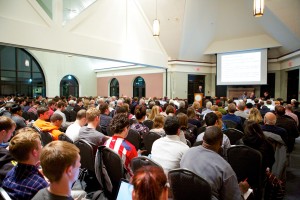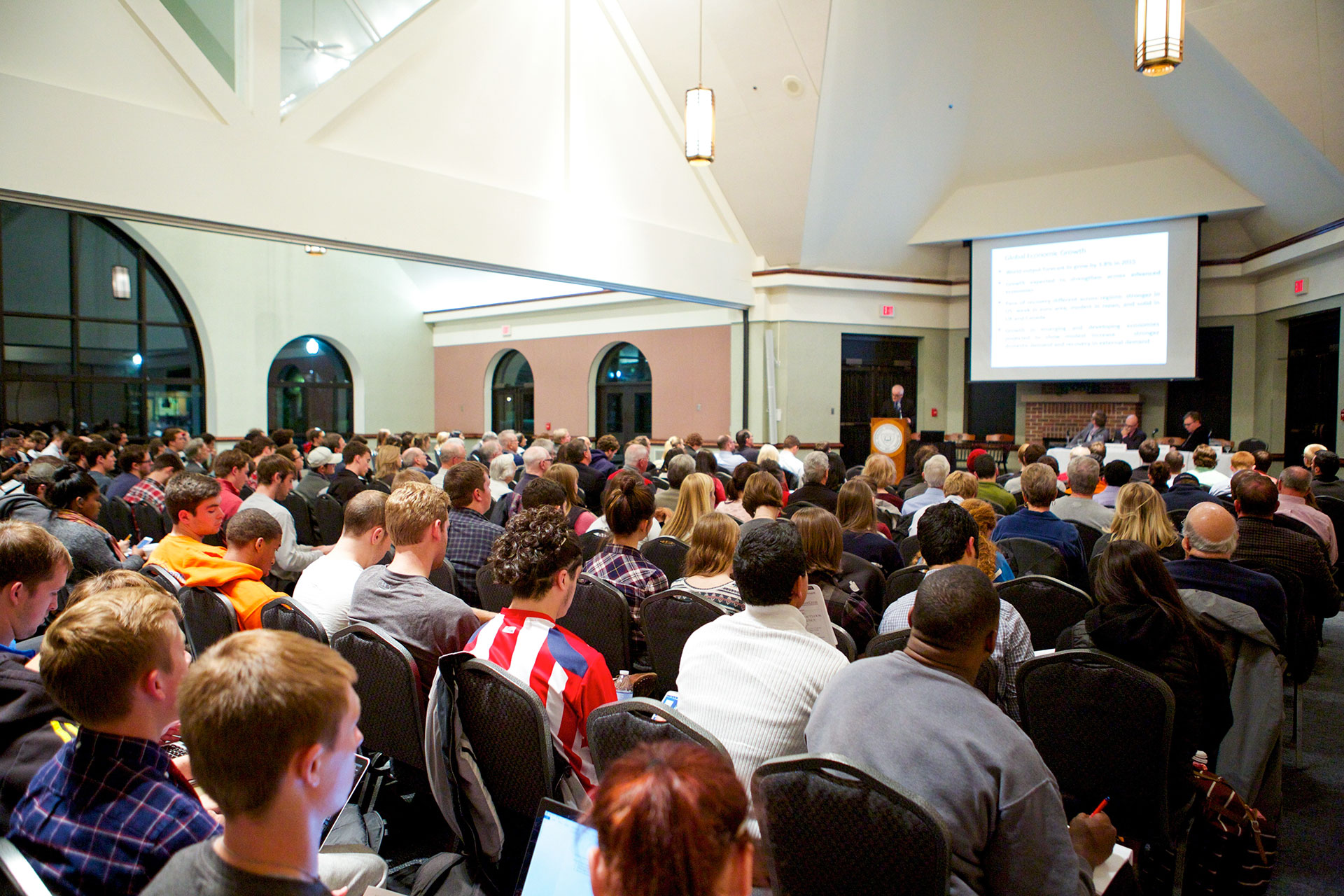
By Hayley Walls
Transcript Correspondent
A panel of economists provided insight on the global, national and local economies to the campus and Delaware community at Ohio Wesleyan’s annual Economic Outlook Conference on Nov. 12.
The conference consisted of presentations by Ian Sheldon, Ph. D., of The Ohio State University, Joel Elvery, Ph. D., of the Federal Reserve Bank of Cleveland and Bill LaFayette, Ph. D., the founder of Regionomics LLC, a local consulting business.
The event was sponsored by the Woltemade Center for Economics, Business and Entrepreneurship and the OWU Department of Economics. Professor Goran Skosples, Ph. D., of the department moderated the event.
Sheldon began by discussing international expectations, comparing different growth and inflation rates across the globe.
“World output is expected to grow by 3.8 percent in 2015… but the pace of recovery in advanced economies is quite different across the various regions,” Sheldon said.
He said the United States and the Eurozone have large output gaps. To remedy this issue, Sheldon recommended negative real interest rates to boost investment and discourage saving, though this would increase the risk of financial instability.
Elvery presented a national perspective, discussing the current state of the economy as well as predictions for the future.
“In 2014, the labor market and GDP have shown steady improvement, while the housing market remains relatively soft,” he said.
GDP and the unemployment rate are expected to continue improving, according to Elvery. However, he said the interest rate between banks, or the federal funds rate, will likely rise in coming years, prompting banks to lend out less money.
LaFayette discussed the local economy, sharing observations on both Central Ohio and Delaware County.
“The Columbus metro area has added 89,000 jobs since January of 2010, a total growth since then of 10 percent,” LaFayette said.
The population of Delaware County has tripled since 1980, he said. It is expected to continue to grow, but at a slower rate.
High housing values have led homebuyers in the county to spend more of their income, but farming has continued to drive the local economy. However, the biggest strength of Delaware is its quality of life, according to LaFayette.

“… comparing different growth and inflation rates across the globe ..” Isn’t it interesting how economists of the more mathematical school distill comparative figures from statistics around the globe, at least half of which are “doctored” (e.g. “hedonic” adjustment of price inflation or the fight over, recently in the European Union and the US, inclusion of drugs and prostitution in gross domestic product) and then recommend measures based on these little trustworthy figures? Measures which are then carried out by e.g. central banks exercising a monopoly that would get them jailed if the monopoly commission had jurisdiction over them (or the SEC, for that matter)?